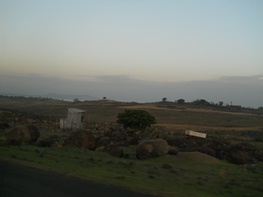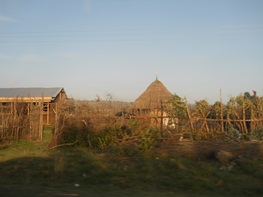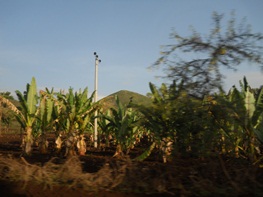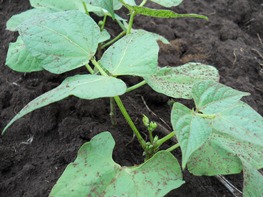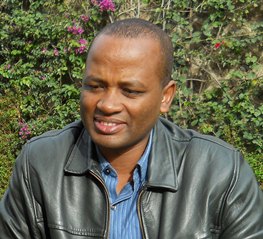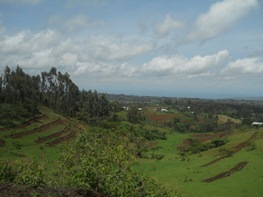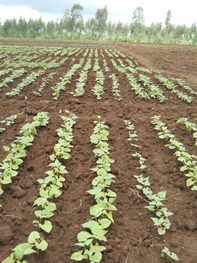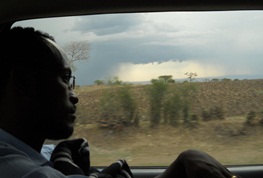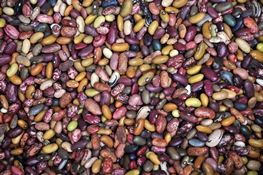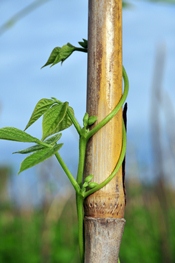By Gillian Summers
The TLI project lets us know about molecular breeding, so it’s exposed us to new developments in science, especially in the application of molecular techniques and plant breeding.” – Asrat Asfaw Amele, Southern Agricultural Research Institute, Ethiopia
Many a tale about Ethiopia will regale the reader with details of its contrasting landscape, numerous rivers, searing regional temperatures, the multicultural makeup of its society, its world-famous, unbeatable long-distance and high-altitude runners, its rich history and culture; a sweet producer of honey, the home of coffee, and origin of all mankind…
Seeing red… but no blood
…I found a land of incurably hospitable and kind people, proud of their country and culture; infectiously good music, incredibly strong coffee, where they love both bloody raw meat and protein-rich red beans, dubbed ‘bloodless meat’ in this part of the world.
Out & about
My first real taste of Ethiopia was out in the countryside where I visited the work of GCP’s Tropical Legumes I (TLI) project in the field, on a trip to the bean fields at the Southern Agricultural Research Institute’s (SARI) research stations at Areka and Hawassa, which took us on a 600-km round tour, out of the capital Addis Ababa and into the Great Rift Valley beyond.
We set off early that cool morning, and as we headed into the countryside, I glimpsed many a local taking their first breath of morning air as they stepped outside from their decoratively-painted, round, thatched-roof homes, and shook the night’s sleep from their shoulders.
So their day began – already there was smoke coming from the chimneys, and I imagined the lady of the house beginning to prepare for the first coffee ceremony of the day. Coffee is often accompanied by a dish of boiled red beans. Or maybe she was warming the pan for the morning injera – a kind of ‘teff tortilla’: a sour-dough thin pancake made of the local cereal, teff. Injera is an iconic ubiquitous component of Ethiopian cuisine, with which diners take all manner of wat, or stew made from a rich variety of ingredients – from legumes to raw meat, carefully rolling the spongy crepe around the filling twice, making sure no food falls onto the fingers, for dining etiquette strictly dictates against the licking of fingers.
Living landscape
We pass score upon score of the gently-smoking thatched round huts – the traditional ‘living rooms’ in these parts; most dwellings are accompanied by modest smallholdings, with maybe a grazing goat or two, and many more with plantations of ensete – a banana-like plant, which, in spite of its inedible fruit, has long been a staple in Ethiopia. It is used for its root, which is mashed to make a tasty, stodgy, bread-like food called kocho, used to accompany meals, a denser cousin of the favourite injera. These smallholdings would also be the perfect size for cultivating beans, as they are not an acre-hungry crop, but grow happily on small plots of land, and in some areas are intercropped with ensete to maximise the space.
Dromedaries, drought and beans
Into this landscape we pass the incongruous addition of a herd or two of camels with their owners…significantly peculiar as these aren’t desert lands, but the edge of the Ethiopian highlands, gradually and graciously giving way to the majestic Great Rift Valley below. I ask my guide about the addition of camel hands to this highland scenery: he explains their strange presence is due to a growing food shortage which has forced these nomadic peoples further afield to find their fare. The appearance of these dromedaries and their human partners brings harshly to mind Ethiopia’s most notorious claim to fame – especially for anyone who recalls the mid-1980s – for whom Ethiopia will always be indelibly synonymous with famine. It also throws the work of GCP, and specifically TLI, sharply into the spotlight, for the over-arching objective of this project is to improve legume productivity in environments considered marginal for agriculture, due to heat and other stresses. Somehow, it seems that more of the world’s environment is becoming ‘stressed’ by the day, though luckily the giant beanstalk of our story is a hardy crop which can be grown on the poor soils and fragmented plots of these challenged lands.
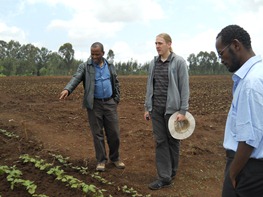
L–R: Asrat Asfaw Amele (SARI), Bodo Raatz (CIAT) and Daniel A Demissie (Areka Research Station) discuss the A–Z of beans at Areka Research Station.
So the legume of choice for this most uncommon road trip is the common bean, Phaseolus vulgaris L, and our Ethiopian bean breeding expert is Asrat Asfaw Amele of the Southern Agricultural Research Institute (SARI), who is the Lead Scientist of the TLI beans component in Ethiopia. Asrat is our friendly guide and fount of knowledge of all things Ethiopian throughout this impassioned passage into the ‘bean valley’, and we are accompanied by Bodo Raatz of the Centro Internacional de Agricultura Tropical (CIAT), recently appointed Principal Investigator of TLI’s bean research. At Areka research station we are joined on our journey by Daniel A Demissie, who, along the way, shares his many insights on beans, diseases such as bean stem maggot (BSM), and on drought . We are chaperoned throughout by our courageous driver, Mr Abebe, who at times resembles a pilot as we seem to fly over the bumpy terrain in the plucky pick-up that is our steed for the day.
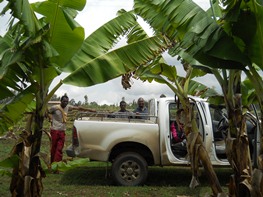
Courageous steeds: our driver, Mr Abebe (foreground and far right) and the intrepid pickup are joined by workers from Areka station
Impact
Against the scenic backdrop of the Ethiopian landscape racing by, with background music courtesy of Teddy Afro (whose politically charged songs, sweet voice and infectious rhythm have made him nothing short of a legend in his homeland), I take advantage of this long and winding road trip to interview Asrat, where his answers echo the whirlwind tour rushing by outside – from a description of the landscape he knows so well, and toils in every day – to the impact that this project has had on national scientists, the impacts on farmers’ lives, as well as impacts that are likely to come in the not-too-distant future.
We consider farmers our partners. We try to understand what farmers are looking for, what they like, and we try to include their interests in our breeding materials so that the breeding materials released by our institution start to get wider adoption.” – Asrat Asfaw Amele (pictured).
Revolution, alliances & partnerships
Ethiopia’s rich history, as varied as its topographical landscape, has known its fair share of extreme rulers. Now it seems the new ‘regime’ calling the shots is climate change, whose ravaging effects are seen worldwide, and no less in the bean fields of Ethiopia. Asrat even pinpoints climate change as the greatest challenge for the next generation of bean researchers, saying, “The farmers’ growing environment may be modified or a new environment may be created. That could also be a challenge – a new pest population or new disease may come; so the challenge in the future may be to breed or develop varieties which adapt to the changing environment.”
The revolutionaries needed to overthrow this ‘tyrant’, it seems, are those of the ‘triple alliance’ partnership, comprising: Ethiopia’s national scientists, researchers from the international science community including CGIAR Centres, and farmers. Firstly, with this approach, the science sector can understand farmers’ needs, which also has a reciprocal effect, as Asrat explains, “We consider farmers our partners. We try to understand what farmers are looking for, what they like, and we try to include their interests in our breeding materials so that the breeding materials released by our institution start are widely adopted.” Secondly, national and international science systems come together to work for a common goal – in Asrat’s words: “Now we’ve got the knowledge and we can speak a common language with people from advanced laboratories. It’s also brought us closer to international institutes like CIAT and other CG Centres – we work together, so they understand our system better and we understand how they function.” He adds, “We are getting technical backstopping from CGIAR Centres, so as a national partner we are doing work, and they are supplying germplasm. That’s the partnership that will continue in the future.”
The weapon used by this ‘revolutionary army’ is GCP’s double-barrelled approach which combines both traditional and molecular breeding practices and is proving to be effective in developing new, more productive bean varieties to combat drought and disease. Specifically of the TLI project, Asrat says, “It lets us know about molecular breeding, so it’s exposed us to new developments in science, especially in the application of molecular techniques and plant breeding.”
The ‘monster’, climate change, rears its ugly head only to be shot down expertly by Asrat and the mighty beans as he reveals, “A lot of farmers are growing our varieties, and, because of changing weather or instability, many people are starting to grow beans; beans are now becoming a major crop, especially in our mandate area.”
Capacity building …
At this stage, the major impact of the TLI beans component in Ethiopia has been on capacity building – both in terms of human resources and physical infrastructure, as Asrat illustrates, “In our breeding programme, capacity building has been an important aspect: scientists in our national system are being exposed to new technology, information, and training; we also have a full irrigation system in about 10 hectares of land, which will revolutionise our work.”
… and on to farmers
By building on lessons learnt throughout this project, current impacts for the national science system will be translated into ‘real impacts’ in farmers’ fields in the near future. Indeed, Asrat hopes his future work will involve “getting the material into the hands of farmers, to see some impact or change, and to modernise and speed up breeding processes using markers developed by this project.”
So the ‘magic beans’ of our story tell of a rich brew brimming with such potent ingredients as molecular breeding, capacity building, partnerships spanning continents and research systems, true teamwork with the farmers in the fields, and the drive to conquer the new challenge of a changing climate.
The impacts from the TLI project are the pot of gold at this rainbow’s end, showing that fairy tales do come true, where ‘magic beans’ put down roots and grow real shoots, and are not just ‘castles in the air’.
Links
- Bean research in Ethiopia
- OPEN ACCESS BOOK CHAPTER: How to phenotype beans for drought
- Video featuring Asrat A Amele







